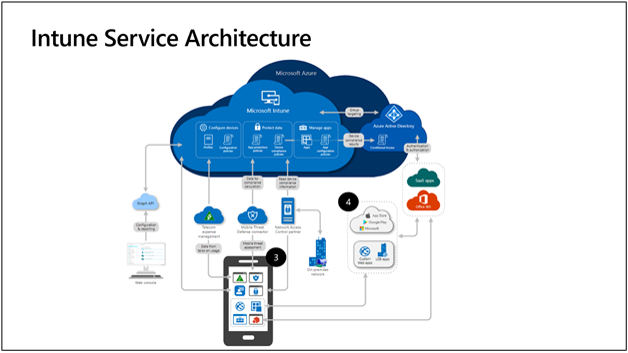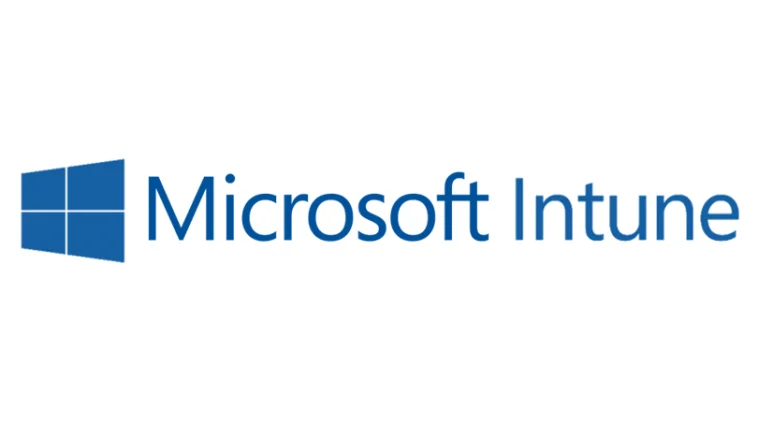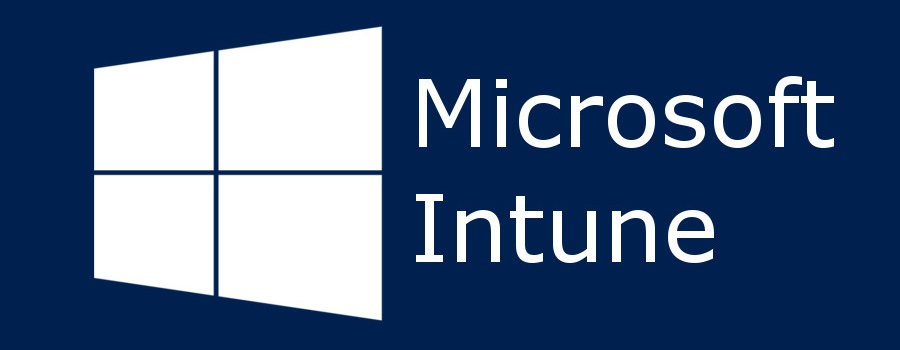Microsoft Intune is a cloud-based device management and security platform that integrates with other Microsoft technologies to provide end-to-end IT management for organizations. It enables businesses to manage devices, applications, and policies from a single console, simplifying IT administration and providing greater control over corporate resources.
Toc
Throughout this guide, we will explore the key features of Microsoft Intune and how it can help your organization effectively manage its IT infrastructure. We will also discuss best practices for implementing and utilizing Intune to maximize its benefits.
Introduction to Microsoft Intune

In today’s rapidly evolving technological landscape, effective IT management is pivotal for organizations striving for efficiency and security. Microsoft Intune emerges as a game-changer, offering a robust platform for managing devices and applications. Designed with IT professionals in mind, Intune streamlines processes and enhances productivity. But what exactly is Microsoft Intune, and why is it so significant for IT professionals?
What is Microsoft Intune?
Microsoft Intune is a cloud-based service that enables organizations to manage and secure devices, applications, and policies from a single console. It offers features like mobile device management (MDM), mobile application management (MAM), conditional access policies, and more.
With Intune, organizations can manage devices across various platforms such as Windows, macOS, iOS, and Android. It also integrates seamlessly with other Microsoft technologies such as Azure Active Directory for identity management and Microsoft Endpoint Configuration Manager for advanced device management capabilities.
Benefits of Using Microsoft Intune
- Simplified Management: With its cloud-based platform, Intune offers a centralized and unified approach to managing devices, applications, and policies. This eliminates the need for multiple tools and streamlines IT management processes.
- Enhanced Security: Intune includes built-in security features such as conditional access policies, which ensure that only authorized users can access corporate resources. It also offers options for data protection, app protection, and more to keep organizational data secure.
- Scalability: As a cloud-based service, Intune is highly scalable and can accommodate organizations of all sizes. Whether you have ten or ten thousand devices to manage, Intune can handle it efficiently.
- Cost-Effective: With Intune’s subscription-based model, organizations only pay for what they use. This eliminates the need for upfront hardware and software costs, making it a cost-effective option for managing IT infrastructure.
Features of Microsoft Intune

Microsoft Intune is more than just a management tool; it’s a comprehensive solution for modern IT challenges. Here are the key features that make it indispensable:
Mobile Device Management (MDM)
Mobile Device Management (MDM) is one of the cornerstone features of Microsoft Intune, allowing organizations to secure and manage mobile endpoints efficiently. With MDM, IT administrators can enroll devices, enforce security policies, and deploy applications seamlessly across all enrolled devices, regardless of their operating system. This capability enables organizations to maintain compliance with regulations and ensure that sensitive corporate data remains protected, even on personal devices used for work purposes. Additionally, MDM simplifies the process of remotely wiping data from lost or stolen devices, providing an extra layer of security for organizations worried about data breaches.
Mobile Application Management (MAM)
In addition to MDM, Microsoft Intune offers Mobile Application Management (MAM), which specifically focuses on managing applications on devices. MAM enables organizations to control how applications are used, sharing information between apps while protecting sensitive data. With features such as application wrapping, IT admins can add security policies to applications without needing to modify the underlying code, ensuring that corporate data remains secure while allowing employees to use their preferred applications. This adaptability is essential in today’s mobile-first world, where workers expect to access corporate resources from their personal devices without compromising security.
With the combined power of MDM and MAM, Microsoft Intune positions organizations to achieve a holistic approach to device and application management, fostering productivity while ensuring security compliance.
Best Practices for Implementing Microsoft Intune

While Microsoft Intune offers a plethora of features and capabilities, it’s essential to follow best practices when implementing it in your organization. Here are some tips to help you get the most out of this platform:
1. https://networthanalysis.top/adobe-lightroom-your-ultimate-non-destructive-editing-tool
2. https://networthanalysis.top/revolutionizing-finance-top-fintech-companies-leading-the-way
3. https://networthanalysis.top/unlocking-the-future-the-mba-in-artificial-intelligence
4. https://networthanalysis.top/from-chatbots-to-self-driving-cars-the-ai-engineers-impact
5. https://networthanalysis.top/commercial-xfinity-the-game-changer-for-small-business-connectivity
Plan and Prepare
Before diving into the implementation of Microsoft Intune, a well-thought-out plan is crucial. Start by assessing your organization’s specific needs and objectives; this involves identifying the devices and applications that require management. Define clear goals for what you hope to achieve with Intune, such as enhancing security, improving user experience, or streamlining device deployment. Involve key stakeholders from different departments, including IT, security, and compliance, to ensure that the strategy aligns with overall business objectives.
Set Up a Pilot Group
Implementing Intune can be complex, which is why establishing a pilot group is a prudent step. Select a diverse group of users who represent different parts of your organization, and roll out Intune to these users first. Monitor their experiences and gather feedback regarding the device management and application deployment processes. This pilot phase allows you to identify potential challenges and make necessary adjustments before a company-wide rollout. It also provides an opportunity to create training materials and support resources based on real user scenarios, which can enhance the ultimate adoption of Intune throughout the organization.
Configure Policies and Settings
Once the pilot group is successfully set up, proceed to configure the necessary policies and settings within Intune. It’s vital to establish device compliance policies that dictate the security requirements for enrolled devices, such as password complexity, encryption, and update management. These policies help maintain a consistent security posture across your organization’s devices. Additionally, configure application protection policies to ensure that corporate data is safeguarded when accessed through mobile applications, even on personal devices.
By meticulously planning, conducting a pilot test, and configuring robust policies, organizations can maximize the potential of Microsoft Intune and ensure a smoother deployment process that aligns with their IT management goals.
How Microsoft Intune Works

Understanding the mechanics behind Intune is crucial for leveraging its full potential. Here’s a step-by-step outline of how Intune operates:
Device Enrollment
Device enrollment is the foundational step in implementing Microsoft Intune, allowing devices to be registered within the Intune management system. This process can be carried out in various ways depending on the type of devices and the organization’s needs. For Windows devices, users can enroll through the Company Portal app or use Auto Enrollment in Azure Active Directory. For mobile devices, enrollment can be done via the Intune Company Portal app available on both iOS and Android.
During enrollment, devices are configured to receive management settings and policies automatically. Users may be required to authenticate their identity, ensuring that only authorized personnel can enroll their devices. Once enrolled, devices can be monitored for compliance with organizational policies, receive required applications, and undergo security configurations tailored to protect sensitive corporate data. This streamlined process not only simplifies device management but also enhances security by ensuring that all enrolled devices adhere to established compliance standards. As a result, organizations can confidently support the diverse array of devices in their network while maintaining robust security protocols.
Application Deployment
Once devices are successfully enrolled in Microsoft Intune, the next step is application deployment. Intune offers a straightforward process for distributing applications across the organization, ensuring that employees have access to the tools they need to perform their tasks efficiently. Administrators can add applications from various sources, including the Microsoft Store, line-of-business applications, and even public applications available on platforms like iOS and Android.
To facilitate a seamless deployment experience, IT admins can categorize applications by assigning them to specific groups or users based on job roles or functionality. Furthermore, Intune allows for the configuration of required installations, optional installations, and uninstallations, giving organizations fine-grained control over their application lifecycle. This level of management enables companies to ensure that their workforce is equipped with the latest software, while also maintaining compliance with licensing agreements and minimizing the risk of outdated applications being in use.
In addition, Intune offers insights and reporting features that help administrators monitor application usage and performance. By tracking installation success rates and user feedback, organizations can continuously assess the effectiveness of their application deployment strategy. This proactive approach empowers IT teams to address any issues promptly, enhancing the user experience and fostering a more productive workforce equipped with the right tools.
Best Practices for Implementing Microsoft Intune

Effectively deploying and utilizing Intune requires careful planning and execution. Here are some best practices for IT professionals:
Assess Your Needs
Before diving into the implementation of Microsoft Intune, it’s essential to conduct a thorough assessment of your organization’s specific needs. This involves understanding your current IT infrastructure, identifying the types of devices in use, and evaluating the existing security policies. Gather input from stakeholders across various departments to determine the key functionalities and features that are most critical for your organization. This assessment will not only inform your strategy but also help in aligning Intune’s capabilities with your business objectives, ensuring that you make informed decisions on configuration and management.
1. https://networthanalysis.top/revolutionizing-finance-top-fintech-companies-leading-the-way
2. https://networthanalysis.top/elevate-your-career-with-top-ai-bootcamps
3. https://networthanalysis.top/adobe-lightroom-your-ultimate-non-destructive-editing-tool
4. https://networthanalysis.top/from-chatbots-to-self-driving-cars-the-ai-engineers-impact
5. https://networthanalysis.top/unlocking-the-future-the-mba-in-artificial-intelligence
Develop a Training Plan
A robust training plan is crucial to the successful adoption of Intune within your organization. Preparing your workforce to navigate the new system will directly impact its effectiveness. Create tailored training materials that address the unique needs of different user groups—ranging from technical staff who may require in-depth training on device management to end-users who need to understand how to interact with the Company Portal app. Conducting workshops, webinars, and providing on-demand resources can greatly enhance user competence and confidence, fostering a smoother transition to the new platform.
Monitor and Review
After the rollout, it’s vital to engage in continuous monitoring and review of Intune’s performance within your organization. Regularly evaluate device compliance, application usage, and user feedback to identify any areas needing improvement. Using Intune’s reporting features, you can track key performance metrics, which will assist in refining your policies and deployment strategies. This iterative approach not only helps in optimizing the use of Intune but also keeps your organization agile in adapting to evolving technological demands and security challenges.
Case Studies

Real-world examples highlight the tangible benefits of implementing Microsoft Intune:
Medium-Sized Enterprise
A medium-sized enterprise recently transitioned to Microsoft Intune to enhance its device management and security protocols. Prior to implementation, the company faced challenges with inconsistent software deployments and difficulties in maintaining compliance across a diverse range of devices. The IT department carefully assessed the organization’s device landscape and identified the need for a unified approach to managing both corporate-owned and employee-owned devices.
With Intune, the enterprise streamlined its application deployment process, ensuring that all employees received the necessary tools without delay. By categorizing applications according to department needs, IT managed to enhance productivity while maintaining compliance with licensing agreements. Additionally, the enterprise implemented a comprehensive training program to equip employees with the knowledge needed to navigate the new system effectively.
Over the following months, the company observed significant improvements in device compliance and overall security posture. Regular monitoring revealed a reduction in security incidents and an increase in user satisfaction. The proactive approach of gathering user feedback and leveraging Intune’s reporting capabilities enabled the IT team to iterate on their strategies, making data-driven decisions that optimized their deployment and management practices. Overall, the transition to Microsoft Intune not only resolved the enterprise’s initial challenges but also positioned the organization for future growth and technological advancements.
Large Corporation
A large corporation adopted Microsoft Intune to unify its diverse IT management practices across multiple global locations. Previously, the company struggled with fragmented device management systems, leading to inconsistencies and security vulnerabilities, especially with remote employees. The IT team conducted a comprehensive analysis, mapping out the various operating systems, apps, and security requirements across different regions.
By implementing Intune, the corporation was able to establish a standardized management framework that supported a wide range of devices while ensuring compliance with local regulations. The use of Intune’s mobile application management (MAM) features allowed the company to secure its corporate data on employee-owned devices without infringing on personal information. Additionally, the integration of VPN profiles and Wi-Fi configurations streamlined connections for remote workers, enhancing productivity.
Training sessions were tailored to address the varying levels of tech proficiency among employees worldwide, ensuring that all users had the necessary resources to adapt to the new system. Following implementation, the organization reported significant improvements in compliance rates and endpoint security, alongside a noticeable increase in employee confidence regarding IT security practices. By leveraging Intune’s reporting features, the IT department maintained a proactive stance, quickly responding to any identified weaknesses and continuously refining their approach to device and application management. This strategic shift not only bolstered the corporation’s security posture but also created a more cohesive and efficient IT environment across all operations.
Conclusion
The implementation of Microsoft Intune can significantly transform an organization’s approach to device and application management, ensuring both enhanced security and streamlined operations. As demonstrated through case studies of varied enterprise sizes, Intune supports a flexible and comprehensive solution tailored to meet the unique needs of each organization. The combination of thorough assessment, targeted training, and ongoing monitoring establishes a robust framework that not only resolves initial challenges but also facilitates future adaptability in a constantly evolving technological landscape. By leveraging the capabilities of Intune effectively, organizations are better positioned to foster innovation, improve compliance, and enhance user satisfaction, ultimately driving business success in a digital world. Embracing such technology will pave the way for more secure and efficient work environments, empowering employees to leverage technology while remaining connected, compliant, and productive.












